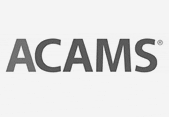As a part of the independent review process and ongoing compliance requirements, transaction monitoring is something that is often overlooked by Money Services Businesses (MSBs). The fundamentals of transaction monitoring are implemented systems to identify and protect institutions from transactions that are not compliant with The Bank Secrecy Act (BSA), Anti-Money Laundering (AML) and Office of Foreign Assets Control (OFAC).
Transaction monitoring and analysis tools are important for both reviewers and MSBs during the review process, as well as for MSBs to have the ability to monitor activity throughout the year.
FinCEN
FinCEN states that, “All the individual transactions a financial institution has knowledge of being conducted by or on behalf of the same person during a single business day must be aggregated.” This means that a business with multiple locations, products and services should aggregate all of their transactions together to identify if any compliance thresholds are met and if any reports need to be filed.
New York
New York has a history of setting a precedent when it comes to regulating financial services centers (FSCs) and MSBs. The New York State Department of Financial Services (NYS DFS) Regulation Part 504 requires all financial services centers to certify that they have adopted a transaction monitoring system. We don’t know when, but we anticipate more states to follow suit.
Independent Review Process
Examiners are using more sophisticated tools than ever before, allowing them to identify considerably more suspicious activity than compared to using traditional pivot tables to cross reference data. You, as an MSB, want to make sure you have a quality process capable of aggregating and monitoring activity throughout the year. If you don’t, it will be apparent your Independent Review is completed.
Effective Transaction Monitoring
An effective transaction monitoring system should facilitate the prevention, early detection and correction of mistakes and problems before they develop into major problems for the company. Manual monitoring systems can also be affected by the biases of employees, reviewers, and auditors who examine transaction records.
An automated system, once the parameters are set, allows analysis that is not tainted by the human errors or skewed by prejudices. The results of an automated system are independent of staff capabilities or biases. Once the rules of an automated system are set, employee time is not spent looking for suspicious activities, rather reviewing and confirming transactions that are appropriate to file.
Ineffective Transaction Monitoring
Ineffective transaction monitoring leads to fines as seen in major cases and law suits. Here are a few cases of financial institutions being fined by FinCEN, OCC, and the State of New York for deficiencies in their transaction monitoring systems:
- In February 2018 the U.S.Bank National Association of Cincinnati, Ohio, (U.S. Bancorp) was fined a total of $598 million for deficiencies in its AML program which included ” systemic deficiencies in its transaction monitoring systems, which resulted in monitoring gaps…” It had among many deficiencies “outdated systems to conduct appropriate monitoring and due diligence.” U.S.Bank National Association of Cincinnati, Ohio was fined by FinCEN, OCC and The US Attorney’s Office for the Southern District of New York.
- UBS was fined $15 million for AML failures including weaknesses in its automated monitoring system which resulted in failure to adequately monitor wire transfers. UBS was fined by FinCEN in December 2018.
- There was a $40 million fine against Mashreq Bank for a host of financial crime compliance deficiencies including inadequate monitoring.They were also asked to conduct 6-month look back review. Mashreq Bank was fined by the New York State Department of Financial Services (NYS DFS) in October 2018.
- Our last example is an older case from 2015 when FinCEN fined a Liquidated Credit Union $500,000 for failure to update its AML program as a result of which it was unable to adequately monitor, detect and report suspicious activity. The fact that the fine came after the credit union was liquidated shows FinCEN takes requirement to maintain an effective AML program seriously.
What to Look for in a Transaction Monitoring System
You want a Transaction Monitoring system to aggregate, analyze and detect.
Aggregate
The system should aggregate across multiple locations, brands and products.
Analyze
It’s one thing to aggregate data, but you want a system to analyze and interpret the information you put into it. Therefore you want a system that can build in custom business and compliance rule-sets that fit your business’ risk threshold.
Detect
Your monitoring system should be able to incorporate your company’s rules to detect high risk activity such as structuring, smurfing and flipping.
Automate
We prefer automation since pivot tools are increasingly dated and archaic. Larger amounts of data make it increasingly difficult to use pivot tables effectively. In addition, automation saves labor time/cost.
Fuzzy Name Logic
Linking a single customer’s data across multiple platforms can be difficult. Monitoring systems should be smart enough to identify similar names and customer data from multiple databases. For instance, if you are using two Point-of-Sale (POS) systems, or one system for check cashing and one system for wire transfers,you should be able to pull that information together and identify if the transactions are coming from the same person.
As an example, a monitoring system should recognize that John Smith and John A. Smith are the same person if they also have the same phone number and live at the same address.
Integrated CTR/SAR Filing
This eliminates a step if your system is integrated to the BSA e-filing website so you’re not double entering information when it is already available to you in your POS system(s).
Case Management for Back-End Review
A monitoring system should store records of filed and non-filed Currency Transaction Reports (CTRs)/Suspicious Activity Reports (SARs) for future review.
Real-Time Data Aggregation
Real-time aggregation is a bonus if you can invest the time to integrate your POS systems directly to your monitoring tools.
Who Needs to Monitor Transactions?
We believe that all of the following need to be monitoring transactions on an ongoing basis:
- Financial institutions such as banks and credit unions
- Money transmitters or principal MSBs
- MSBs with multiple locations
- MSBs with multiple products and services
- High volume check cashers and wire agents
As an MSB you should be aggregating and monitoring your MSB activity on an ongoing basis. It is expected by regulators and will be tested by your examiners.
For additional information about Transaction Monitoring, please feel free to inquire about a demo on Compliance IQ, our proprietary aggregation and analyzation software.
Tags: AML, Automated Transaction Monitoring, Bank Secrecy Act, BSA, BSA/AML Programs, Capital Compliance Experts, Financial Services, Money Service Business, MSB, NY DFS, OFAC, Third Party Independent Reviews








